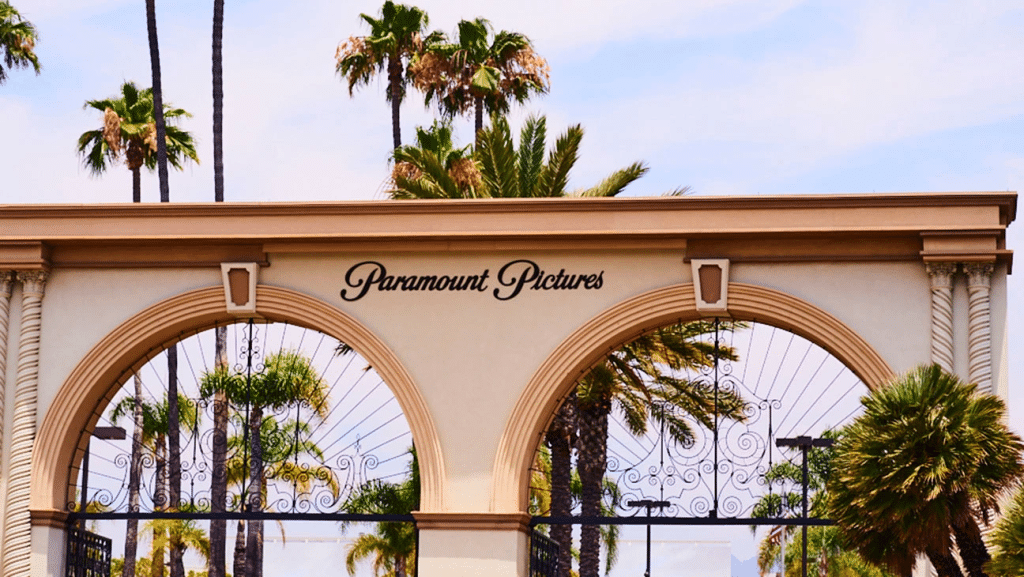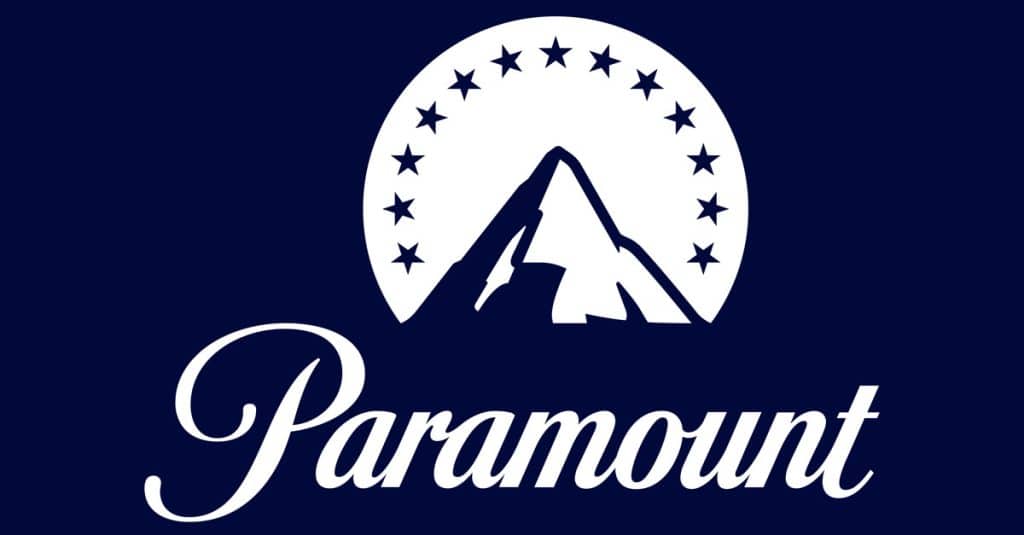When you put on a new movie, without thinking twice, you always expect to see the animated movie logo of the film company appear before the movie starts. Whether it’s the 20th Century Fox lion roaring, the Pixar magnifying glass bouncing across the screen, or Paramount Pictures’ iconic mountain and stars flashing across the scene – with any big box production, the animated logo is expected to appear.
Like we said, you don’t ever think twice about it and that’s because of two things. First, the logo has become so commonplace that its placement is expected and natural. And second, because the logo is so common, it has become widely recognized.
It takes time to build up a logo to 20th Century Fox’s, Pixar’s, and Paramount’s level – creating a highly recognizable logo doesn’t happen overnight. With patience, a highly skilled design team, and a few other things, it is possible though. For this article, we’ll be zeroing in on one of those film conglomerates, Paramount, to provide you with a deep dive into what helped them grow their logo organically to the logo we know today.
Keep reading below to learn the ins and the outs of Paramount and how this logo came to be.
Meet Paramount
Paramount Pictures is one of those brands that doesn’t warrant a lengthy introduction. Paramount Pictures falls under Paramount Network. Paramount Network not only owns Paramount Pictures, but many other television stations you are already familiar with like CBS, The CW, MTV, VH1, Nickelodeon, Pop, Comedy Central, BET, TV Land, and more.
Paramount Pictures was founded on May 8, 1912, in Hollywood (Los Angeles), CA. Founded by a Hungarian-born early investor in movie theaters, Adolph Zukor, Paramount’s headquarters remains in Hollywood today. While several other major film companies serve as competition to Paramount, Paramount has claimed the title of being the oldest operating, and only remaining, major film studio in Hollywood. Overall, Paramount is the fifth-oldest operating film studio in the world and the second-oldest in the United States (only falling behind Universal Pictures, which is headquartered outside of Hollywood).
Paramount’s Evolution
1912 – 1929: Paramount Pictures is founded
In 1912, Adolph Zukor founded Paramount Pictures under a different name, the Famous Players Film Company. With its inception, the company released the United States’ first full-length drama film in a movie theater in New York, which Adolph owned. In its first year of operation, Adolph’s company produced five films. Also, during this first year, Adolph decided to distribute the films he produced through a start-up distribution company, Paramount Pictures.
In the early years of Paramount, in 1916, Adolph brought his company through its first merger, a merger with The Jesse L. Lasky Company, a fellow film production company based in Hollywood. The new name of the film production studio was Famous Players – Lasky Corporation. It wasn’t long before this newly formed company decided to partner with Paramount Pictures, becoming one universal company – the Paramount Pictures we know today.
A few things unfolded after this official merger. First, Paramount’s iconic logo was created. This was based on Paramount’s founder, W.W. Hodkinson’s childhood in Utah. The mountain on the logo resembles a mountain peak he saw as a child. Second, in 1926, Paramount constructed a new Hollywood studio. This project cost the company $1 million, and it took up 26 acres. And third, in 1927, Paramount was awarded the first-ever Academy Award for Best Picture, for Wings.
1930-1959: The early talent of Paramount
Winning the first-ever Academy Award for Best Picture helped propel Paramount to continue producing films of that same caliber. This next era of Paramount is characterized by the iconic Bing Crosby musicals, contracting, and nurturing top movie talent, and trading talent back and forth between film companies. Year after year, Paramount won Academy Awards for Best Picture and consistently showed up on the nomination list.
1960-1979: Paramount expands into television
After growing success in the film industry, Paramount expanded into the television market. To expand rapidly, Paramount purchased Desilu television studios from Lucille Ball. This helped them control the production of many iconic television shows like The Andy Griffith Show, Star Trek, The Brady Bunch, The Odd Couple, and Laverne & Shirley.
With the expansion into television though, Paramount continued to produce film after film, and during this era, Paramount produced many films that still are critically acclaimed today like Breakfast at Tiffany’s, The Godfather, and Saturday Night Fever.
1980-1999: Paramount produces blockbuster after blockbuster
During these decades, Paramount released several films that turned into money-making franchises. With so much praise for films, Paramount kept producing film after film.
It was during this era that film franchises like Indiana Jones and Mission: Impossible were first introduced, as well as staple films like Terms of Endearment, Forrest Gump, Braveheart, and Saving Private Ryan. What was most instrumental during this period of Paramount though was the release of Titanic, in partnership with 20th Century Fox, which became the highest-grossing film ever released at that time, generating more than $1.8 billion.
2000-Today: Paramount today
With each new decade, Paramount was constantly evolving. Paramount proved itself to be a force to be reckoned with in the film and television industries, producing films that continued to receive a wide array of Academy Award nods.
To adapt to evolving industry needs, Paramount also opened a new sound facility and post-production facility that some of the best creative and technical talent still work out of today.
Roadblocks Along the Way
It’s no surprise the biggest roadblock that Paramount has had to deal with is competing film studios. With new partnerships being formed between competitors, Paramount needed to stay at the cutting edge of technology, innovation, and new storylines. They were able to stay prominent despite any increased competition, as displayed by the fact that they are the oldest film studio that is still operating in Hollywood.
The Meaning of Paramount’s Logo and Paramount’s Logo History
Even though Paramount Pictures was formed in 1912, the first logo wasn’t released until 1914. As you see Paramount’s logo progression below, you’ll notice that while it has developed, and become more “modern,” it hasn’t altered very much since the early design.

1914: The first iteration of the Paramount Pictures logo
This first logo for the company incorporated many features that fellow logos at the time exhibited. This included the script font and hand-drawn features. This first version did not last long though and that same year, the logo was updated to a logo version you may recognize today.

1914: The second iteration of the Paramount Pictures logo
The second version of this logo incorporated many elements that resonated with Paramount founder, W. W. Hodkinson. Hodkinson was born in Utah and this logo depicts a mountain he regularly saw throughout his childhood. Beyond the mountain, outlining the logo design are 29 stars. The font is still a script, but it is an updated version of the prior script.

1917: The third iteration of the Paramount Pictures logo
This logo design is not drastically different than the design before it. The largest difference between the two designs is that the number of stars surrounding the logo decreased. This design features 24 stars, each star representing each of the actors that signed on with Paramount in 1914.
1967: The fourth (and current) iteration of the Paramount Pictures logo
While many other companies update logos frequently, Paramount has kept the same logo since 1967. This version is an even more simplified version. The clouds at the bottom of the logo and the word, “Pictures” was removed from the design. Another update was that the number of stars was reduced yet again, now including 22 stars. A final update to this design is the font choice, which once again, has been refined.
With this logo’s release, came an animated version of this design that appears at the start of feature films produced by Paramount.
As we mentioned at the start of this article, this is probably one of the first things you associate with the brand.
Paramount’s font choice:
With every logo design, Paramount has opted to use a script-based serif font. This font is Paramount’s unique font, and the “swirly” script makes it stand out.
Paramount’s logo color:
Paramount’s logo resembles the natural colors you would see on a mountaintop. The color palate is blue and white, depicting the sky and a snow-capped mountain. The colors don’t seem to hold any deeper meaning beyond it being made to represent what a natural mountain landscape may look like.
Paramount’s logo symbols:
Paramount’s logo is made up of two prominent symbols. The first is a mountain which was chosen to represent the childhood of founder, W.W. Hodkinson. Hodkinson grew up in Utah and grew up alongside many mountains, like what is depicted in the logo.
The second is the stars that surround the logo. The original meaning behind the stars was to include 24 stars that represented each “star” (or talent) that signed on with Paramount in 1914. To adapt the logo though, two of these stars were dropped and today’s logo only displays 22 stars.
Paramount Today
Today, Paramount holds a few accolades. Paramount is the fifth-longest-surviving film studio in the world, the second-longest-surviving film studio in the United States, and the longest-surviving film studio in Hollywood.
So, what has kept Paramount to keep these titles? That would be its constant innovation. In 2005, Paramount purchased DreamWorks for $1.6 billion, expanding its market reach. While this partnership only lasted until 2008, it was a partnership that helped set Paramount up for future acquisitions and mergers.
In the years that followed, Paramount signed a deal with Apple Inc. to sell its films through the iTunes Store, Paramount formed a partnership with developer, FanRocket, Paramount founded Insurge Pictures, and founded an animation division after DreamWork’s departure.
More recently, after CBS Corporation and Viacom split into two separate groups, they merged back together under Paramount in 2019. With this new structure, while it wasn’t Paramount Pictures specifically, ViacomCBS purchased a 49% stake in Miramax which provided Paramount with the distribution of Miramax’s 700-film library, and any future releases.
Today, Paramount Pictures is led by CEO Brian Robbins, the former president of Nickelodeon. Paramount’s headquarters remains in Hollywood (Los Angeles), CA, and last year, Paramount’s annual revenue was $30.15 billion, a 5.49% increase from the year prior.
Lessons Learned from Paramount
If you take anything away from this article, let it be this lesson from Paramount’s logo design – your logo does not need substantial changes to become memorable. Paramount has been around for more than 100 years and during that time, the brand has only had four logos. For them, four logos were all the company ever needed.
When you look at Paramount’s logo evolution, you want to take account of a few things, which you can bring over to your own logo’s design. The first lesson is that Paramount’s logo never lost its key features. What people remembered about the first version of the Paramount logo; they would find in a later logo design. Each logo version included a mountain and stars, so it was never a question of what logo design you are looking at. Next, by keeping the same elements of a logo, by keeping it consistent, you are building credibility and building a reputation of being a long-standing business. And finally, the logo uses simple symbolism tying the mountain and stars back to the company’s early beginnings.
We hope you found this article helpful as you take a closer look at how Paramount’s logo evolved, and what lessons from Paramount you can bring over to your design. Whether you need to create your company’s first logo, or whether your logo needs a simple update, you don’t have to tackle that alone. Companies like Hatchwise are equipped to take the stress of logo design away, all with a simple logo contest.
If you’re ready to get started with a logo contest, don’t wait on reaching out to Hatchwise. After you fill out a creative brief, Hatchwise’s team of creatives will get started on sending you logo options – it’s as simple as that. Reach out to a member of Hatchwise’s team today to get started!
Check out these awesome Logo Contests run on Hatchwise:





















